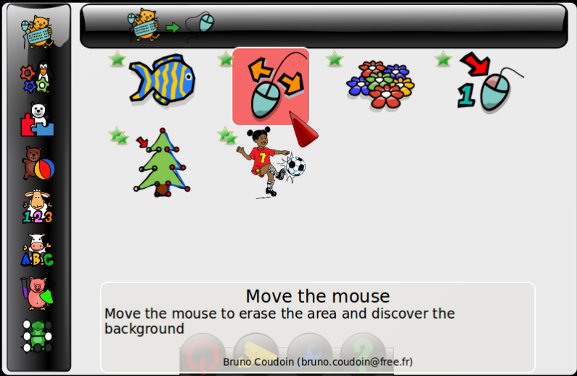
If you’ve been around computers for a while, you might associate Linux with a certain stereotype of a certain type of computer user. How do you know someone uses Linux? Don’t worry, they’ll tell you. But don’t let Linux’s bad press derail your experimentation! It’s the last frontier for customization in desktop machines, and it’s one of the few operating systems that permits complete control by the user at a deep and permanent level.
That means that we can tweak the heck out of it, which is perfect for kid-friendly operating systems. Thanks to this unprecedented degree of control, parents can set up a specialized distro of Linux for children, ensuring children don’t stumble across dangerous content accidentally.
Of course, it’s definitely easier to just use Windows. But if that’s your attitude, what are you doing knee-deep in this post? Linux is also free, which can make it well-suited for classroom or computer lab deployment.
Linux Distros for Children
These Linux distros for children are built with simplified, kid-friendly interfaces. An adult will need to install and set up the operating system at first, but kids can run the computer entirely alone. You’ll find large colorful interfaces, plenty of pictures and simple language.
Unfortunately, these distros are some of the least-frequently updated projects in existence. You can still run the projects, but don’t expect a timely response from the developer on issues you might encounter. As such, this is familiar territory for only the most committed of Linux nerds.

Edubuntu
Edubuntu is an education-specific fork of the popular Ubuntu operating system. It has a rich graphical environment and ships with a lot of educational software that’s easy to update and maintain. It’s designed for children in middle and high school.
Ubermix
Ubermix is designed from the ground up with the needs of education in mind. Ubermix takes all the complexity out of student devices by making them as reliable and easy-to-use as a cell phone without sacrificing the power and capabilities of a full operating system. With a turn-key, five-minute installation, twenty-second quick recovery mechanism, and more than sixty free applications pre-installed, Ubermix turns whatever hardware you have into a powerful device for learning.
Sugar
Sugar is the operating system built for the One Laptop Per Child initiative. Sugar is pretty different from normal desktop Linux, with a heavy bias towards classroom use and teaching programming skills.
Content Filtering Linux for Children
The best tool for protecting children from accessing inappropriate content is you, but you can’t be there all the time. Content filtering via proxy filtering sets up certain URLs as “off limits.” There are two main tools you can use. Content filtering programs abound, but here are a few options to consider.

DansGuardian
DansGuardian, an open-source content filter that works on virtually every Linux distro, is flexible and powerful, requiring command-line setup with a proxy of your choice. If you don’t mind digging into proxy settings, this is the most powerful choice.
Parental Control: Family Friendly Filter
Parental Control: Family Friendly Filter is an extension for Firefox that allows parents to block sites containing pornography and any other kind of inappropriate material. You can blacklist particular domains so that bad websites are always blocked.

If you are still using an older version of Firefox that doesn’t support web extensions, then you can check out ProCon Latte Content Filter. Parents add domains to a pre-loaded blacklist and set a password to keep the extension from being modified.
Fun Stuff

If you want a kid to use a computer, you better put some games on it! Some of the best childhood memories I have come from playing computer games with my friend. And like a lot of my fellow students, I unironically enjoyed the educational games they set up for us in the computer lab, especially alongside the grouchy nuns I had to deal with for the rest of the day. A backflipping turtle that taught me French was an extraordinary upgrade, as you can imagine.
Linux isn’t as gaming-friendly as Windows. However, they’re working on that all the time. Here are a few software choices to round out your Linux for children operating system:
- Super Tux Kart (kart racing game)
- GCompris (educational game suite)
- Secret Maryo Chronicles (Super Mario clone)
- Childsplay (educational/memory games)
- EToys (programming for kids)
- TuxTyping, (typing game)
- Kalzium (periodic table guide)
- Tux of Math Command (math arcade games)
- Pink Pony (Tron-like racing game)
- KTuberling (constructor game)
- TuxPaint (painting)
- Blinken (memory game)
- KTurtle (educational programming environment)
- KStars (desktop planetarium)
- Marble (virtual globe)
- KHangman (hangman guessing game)
Conclusion: Why Linux for Children?
Linux has a reputation for being needlessly complex. So why use Linux for children? It’s about setting kids up to learn. Working with Linux provides many opportunities to learn how the operating system works. As children get older, they’ll have opportunities to explore, driven by their own interests and curiosity. Because the Linux platform is so open to users, it’s an excellent venue for children to discover a life-long love of computers.
The post Setting Up Linux for Children appeared first on SpyreStudios.















